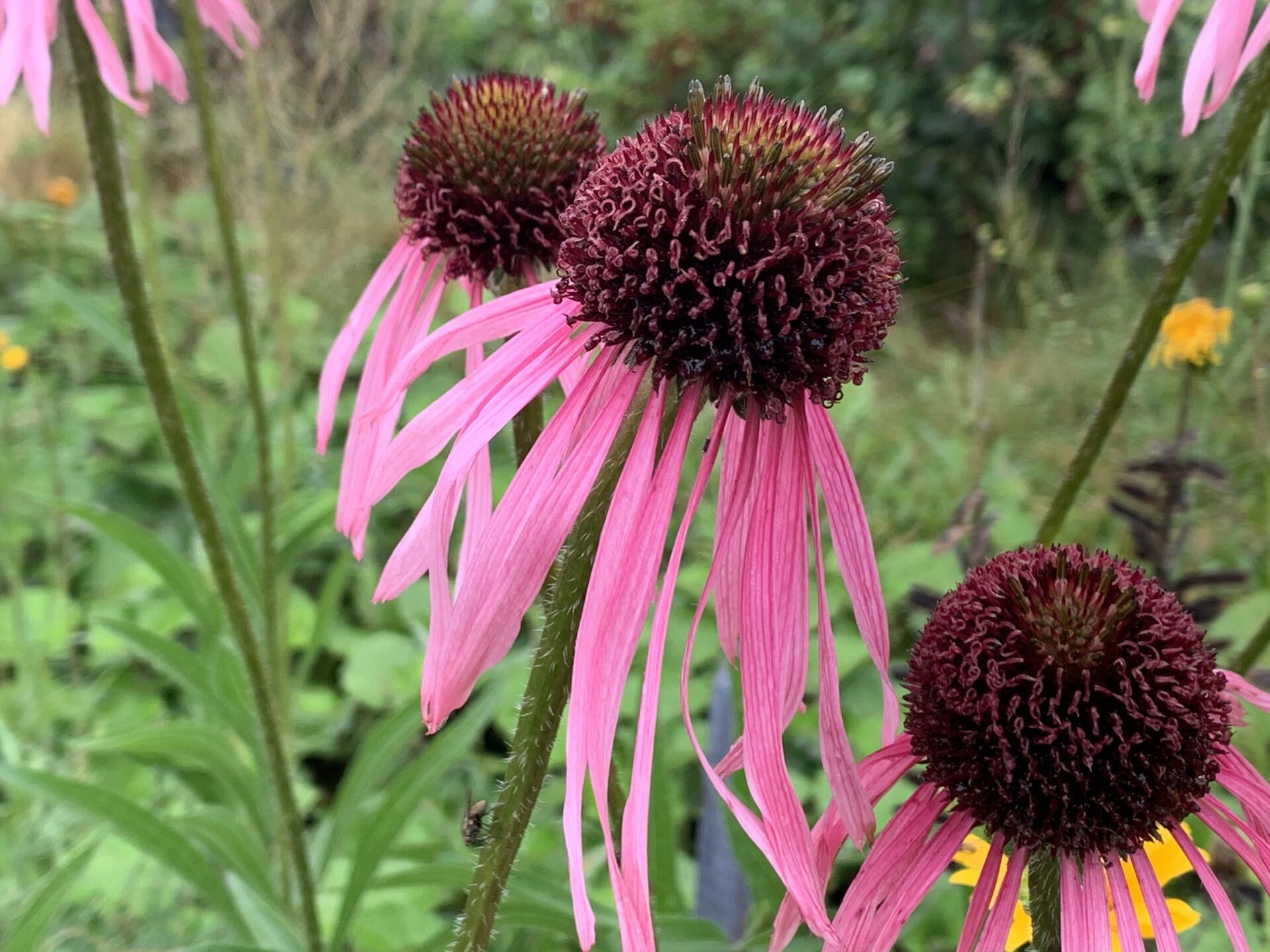Wildflowers
Garden Clippings for April 1, 2023
One of my all-time favorite perennials is Rudbeckia, commonly known as Black-Eyed Susan. The original Black-Eyed Susan is a native wildflower that grows freely in full sun. It has deep roots which helps the plant during hot dry spells. Black-Eyed Susan blooms longer than most perennials, beginning in mid-summer, extending into fall.
In recent years, horticulturists have taken the original native Black-Eyed Susan and have created new varieties with varying colours, heights and bloom times. Rudbeckia ‘Goldstrum’ is a popular variety with bright yellow, long lasting blooms on a compact plant.
When horticulturists tweak native plants, they concentrate on characteristics such as colour, size, fragrance, hardiness, bloom period, or whatever the gardening consumer might crave. But in doing so, they might forfeit the plants’ original attributes of pollinator-friendliness and attractiveness for insects, birds and other wildlife.
All varieties of Rudbeckia are wildlife friendly, but if attracting bees and butterflies is your primary goal, your best bet would be to plant the original native Black-Eyed Susan. Rudbeckias are easy to grow, easy to maintain, and require little attention.
Native Rudbeckias are a short-lived perennial that may only survive for a year or two. But they freely self-seed, which will almost guarantee a patch that will produce and flower forever. Potted plants will be available in spring, but if you want to save a few dollars, a package of 175 seeds will only cost a few dollars.
Gardeners intent on growing a pollinator friendly garden will want to plant a mixture of wildflowers in order to satisfy a wide variety of bees, butterflies, insects and birds. Those of us who want a neat and tidy landscape may want to set aside a patch in the backyard for a relaxed wildflower garden.
A common misconception amongst gardeners is the belief that a wildflower garden requires no maintenance. My back yard garden is case in point. Our front and backyard near the house is landscaped with my favorite horticulture plants, but the second half of our backyard is primarily grassland. I’ve planted 25 native trees, and as time goes on, we will plant more native wildflowers. Our challenge is three-fold: keep the weeds at bay, nurturing the feeble wildflowers so they are not gobbled up by the aggressive plants, and getting rid of invasives.
Blanketflower (Gaillardia) is another summer flowering wildflower that is easy to grow, brightly coloured and long lasting. Blanketflower has a relaxed growth habit, with cheerful yellow flowers.
Little Bluestem is an ornamental grass with attractive foliage growing into a compact 18 inch mound. Colour is blue-green in summer, turning yellow in fall and winter. Little Bluestem plays host to several butterflies and its seeds are eaten by many songbirds. Like Blanketflower and Rudbeckias, Little Bluestem is easy to grow from seed.
Purple Coneflower (Echinacea) is a beautiful summer flowering tall-growing wildflower that is popular with hummingbirds and butterflies. For something shorter, Blazing Star (Liatrus) has purple bottlebrush type blooms that make great cutflowers.
Since wildflower seeds are collected in fall and packaged in winter, some will require cold treatment prior to sowing. This can be accomplished by putting the seed in a small plastic bag mixed with moistened vermiculite or perlite. Place the bag in the fridge for 6 to 8 weeks. Check once a week to keep the mix moist but not waterlogged. At the end of the cold treatment, sow seeds in a seeding tray filled with a soilless growing medium. Once the seeds have sprouted and have 2 to 4 true leaves, transplant directly into larger pots or directly into the garden.


